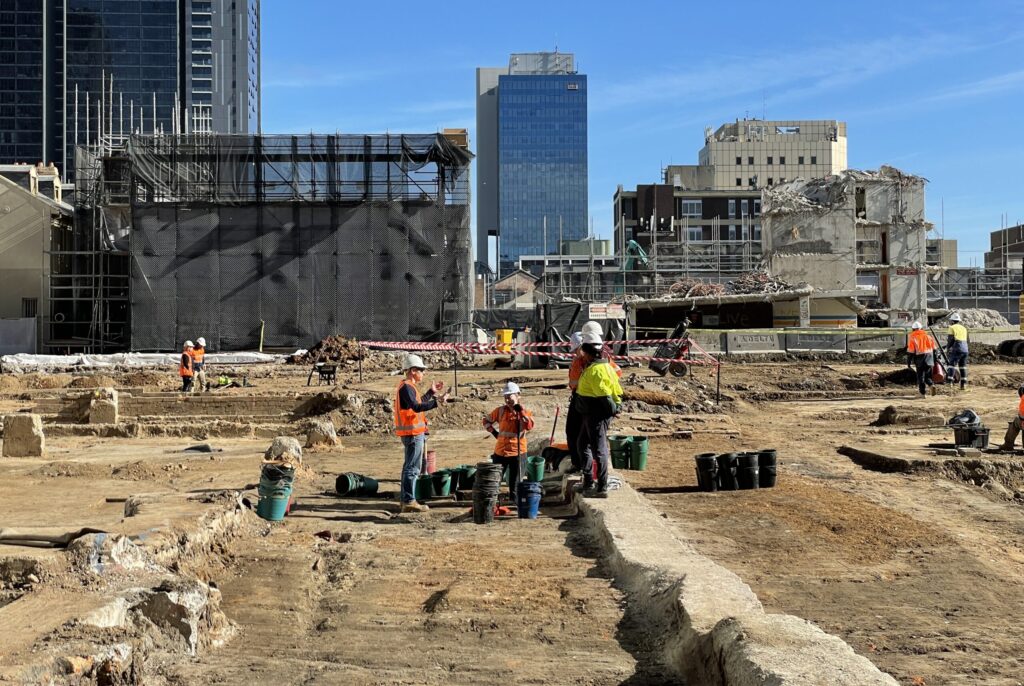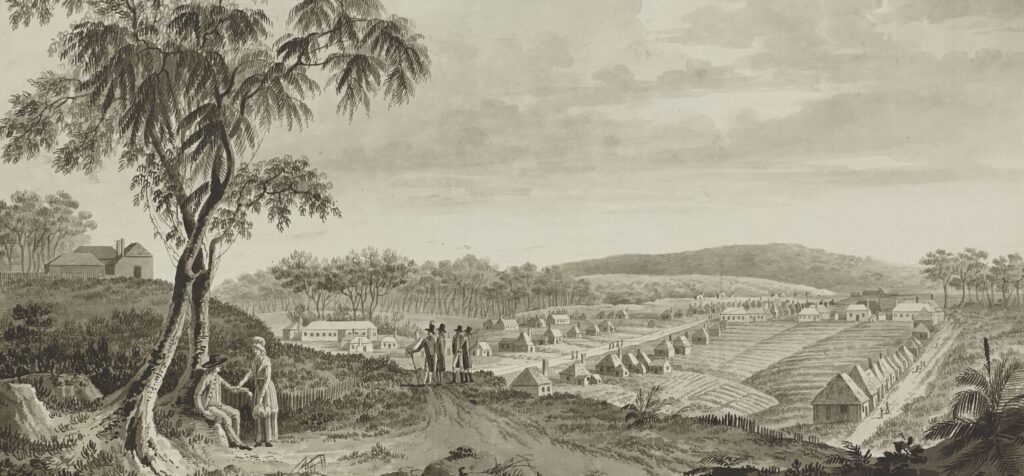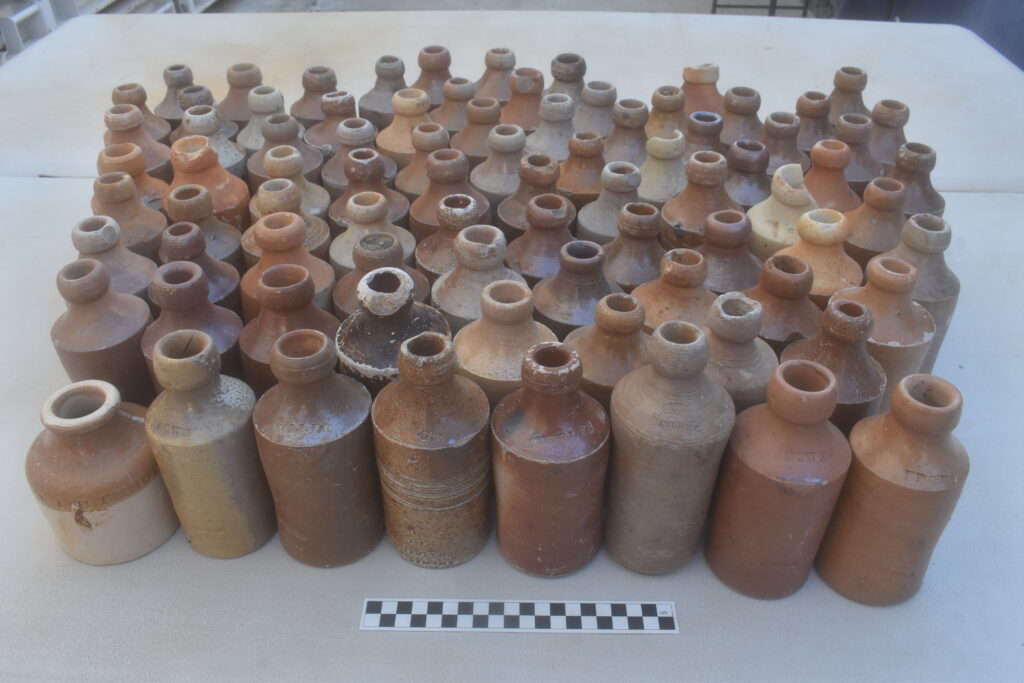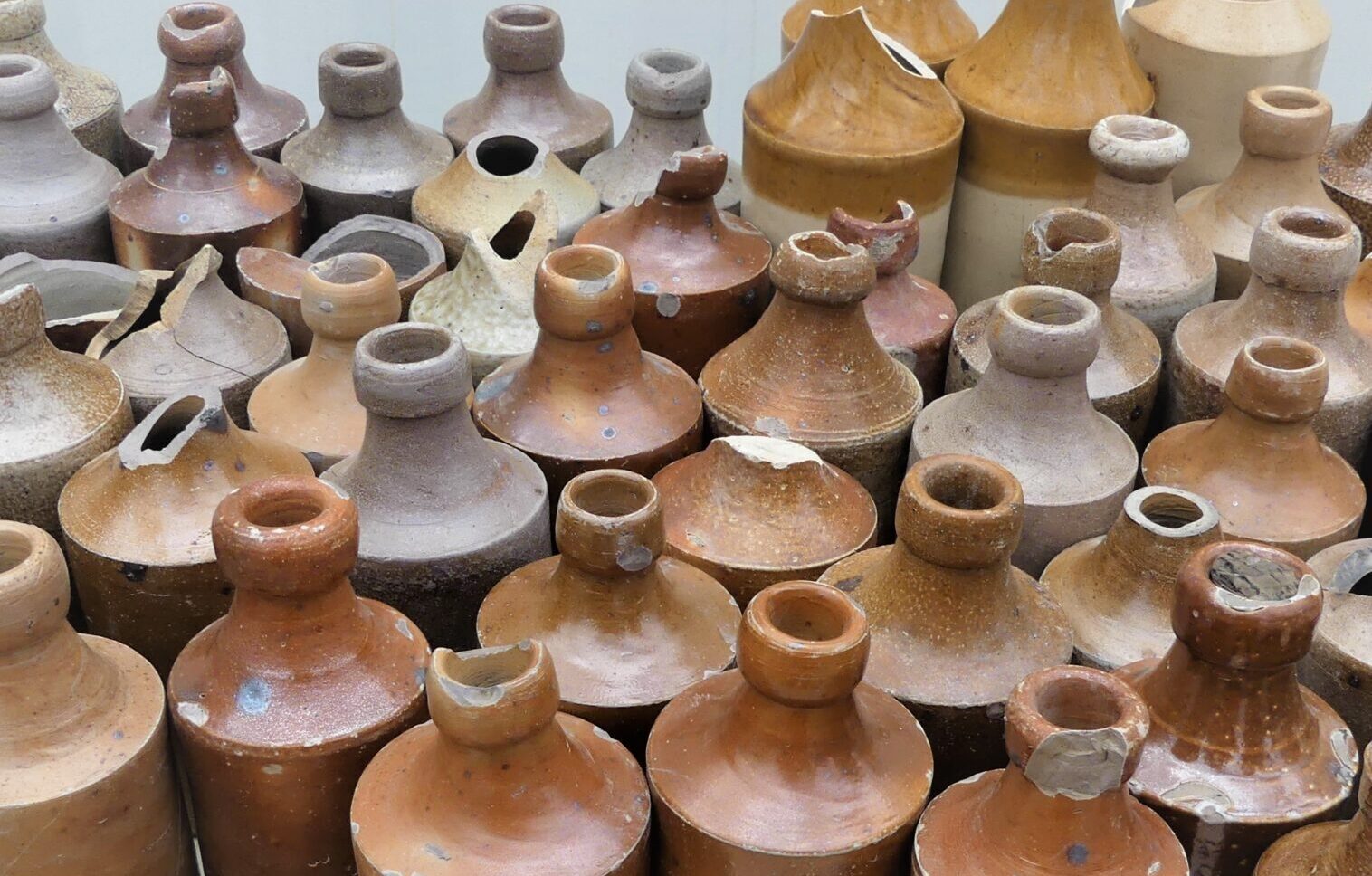
Colonial Parramatta
The Parramatta metro station site is within the historic core of Parramatta and the original town grid laid out in c1790-1792.
The site has multiple phases of archaeology associated with Parramatta’s colonial development including an agricultural and convict settlement, a free-market town and then an urban centre by the late 19th century.
The project provides a rare opportunity to investigate a city neighbourhood. The archaeological investigations of several convict huts, a range of houses, local businesses, and industries provides evidence and artefacts associated with people whose enterprise and endeavours shaped the history, culture and growth of Parramatta.
What’s with all the rubbish?
Ever since people began to live in towns and cities, the problem of what to do with rubbish and waste has required planning and cooperation. Regular garbage collection did not begin in Parramatta until the 1880s. Before then, residents had to manage and remove their own waste. ‘Hard rubbish’—broken crockery, old boots, unwanted bottles—were buried in pits in the yard, and removed by carters if the pile grew too big.
Alternatively, if a well, cesspit or cistern was no longer needed, the occupant would fill it with rubbish and unwanted things before it was sealed. This process has given archaeologists an extraordinary glimpse into the lives of these Parramatta residents. Artefacts recovered from the rubbish pits, cesspit backfills and other deposits provide a tangible record of their occupation. By studying the age, type and use of the artefact fragments, we can tell the stories of these ‘hidden histories’ in a different way.
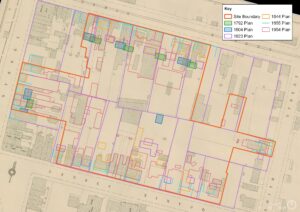
This image shows an overlay of recorded structures from historic maps on the 1895 plan. Source: State Library NSW with GML Heritage overlay.
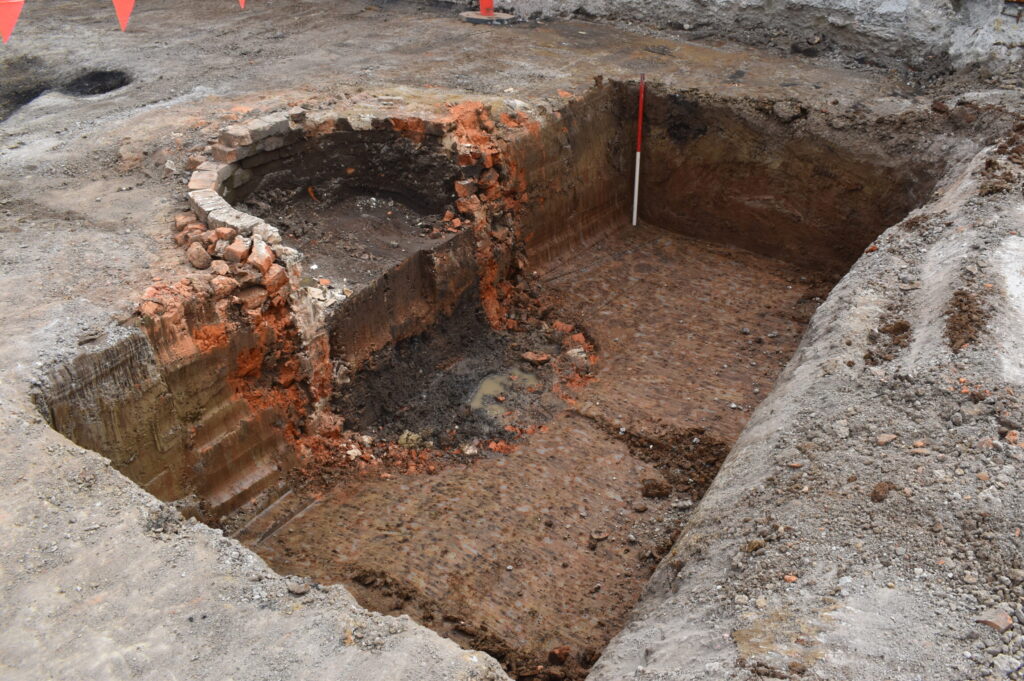
A mid-19th century sandstock brick well in the rear yard of Lot 14.1, George Street, during excavation.
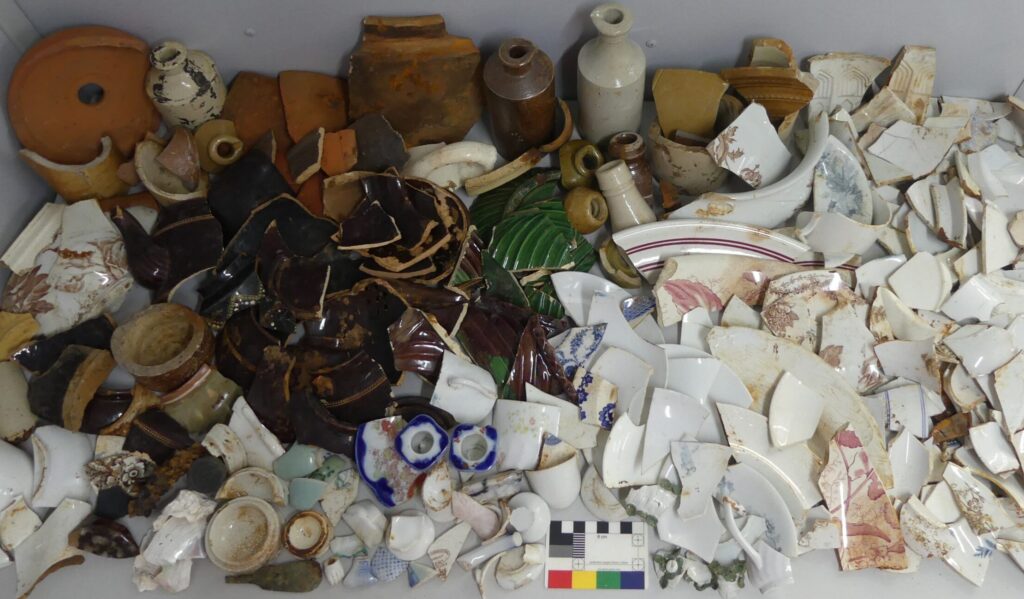
Selection of artefacts from a rubbish pit in the backyard of Lot 28, Smith Street.
Telling stories from artefacts
Many of the artefacts found on site can be traced back to the humble kitchen. These mostly contain vessels for storage—stoneware bottles for ginger beer or other sodas, black glass bottles for beer and wine, and light green bottles for pickles and other condiments.
Dining and meal taking was an important part of daily life in 19th century Parramatta. A myriad of patterns, shapes and special purpose items were made in England and shipped to the colonies, or brought in the trunks of immigrants.
Other artefacts reveal how children lived and played in 19th century. Few had the opportunity to attend school and many helped their parents with work or domestic chores. Throughout the 1800s the notion of childhood was developing and many purpose-made toys such as doll’s tea sets, marbles and later tin soldiers and education toys were mass-produced.
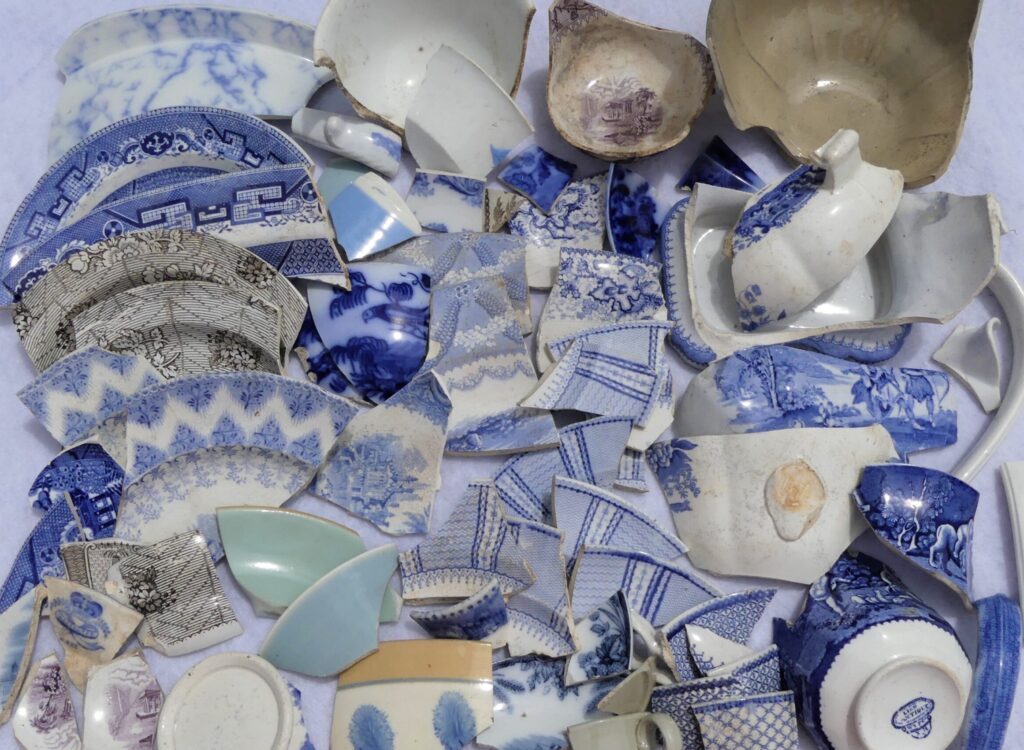
Tea and tablewares from a rubbish deposit within a cistern.
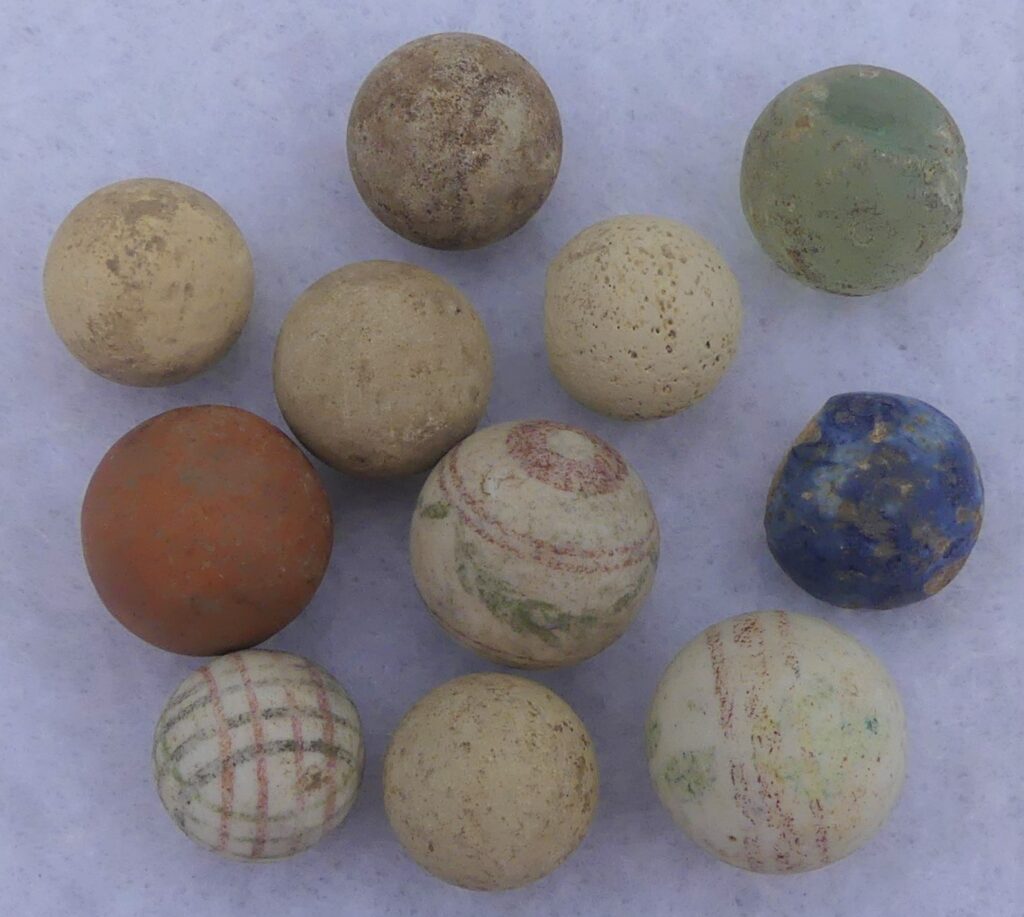
Toy marbles.
Migrant life in Parramatta
While Parramatta was dominated by colonial born and migrants of Anglo-Saxon descent, the Australian colonies were home to people from all over the world.
The first officially recorded Chinese-born settler to Australia, arriving in 1818, held the licence to the Golden Lion Inn in Church Street, Parramatta in 1829. During the gold rushes of the 1850s and 1860s, a large number of Chinese migrants moved to the Australian colonies to try their luck at mining and settled in the cities—including Parramatta. Chinese coins and distinct ceramic vessels have been recovered from underfloor deposits and rubbish pits from several properties on Macquarie and George Streets.
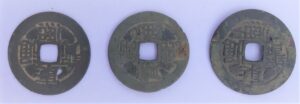
Chinese coins (known as ‘cash’) made in the Qing Dynasty, during the reign of Emperor Kangxi 1662-1772.
